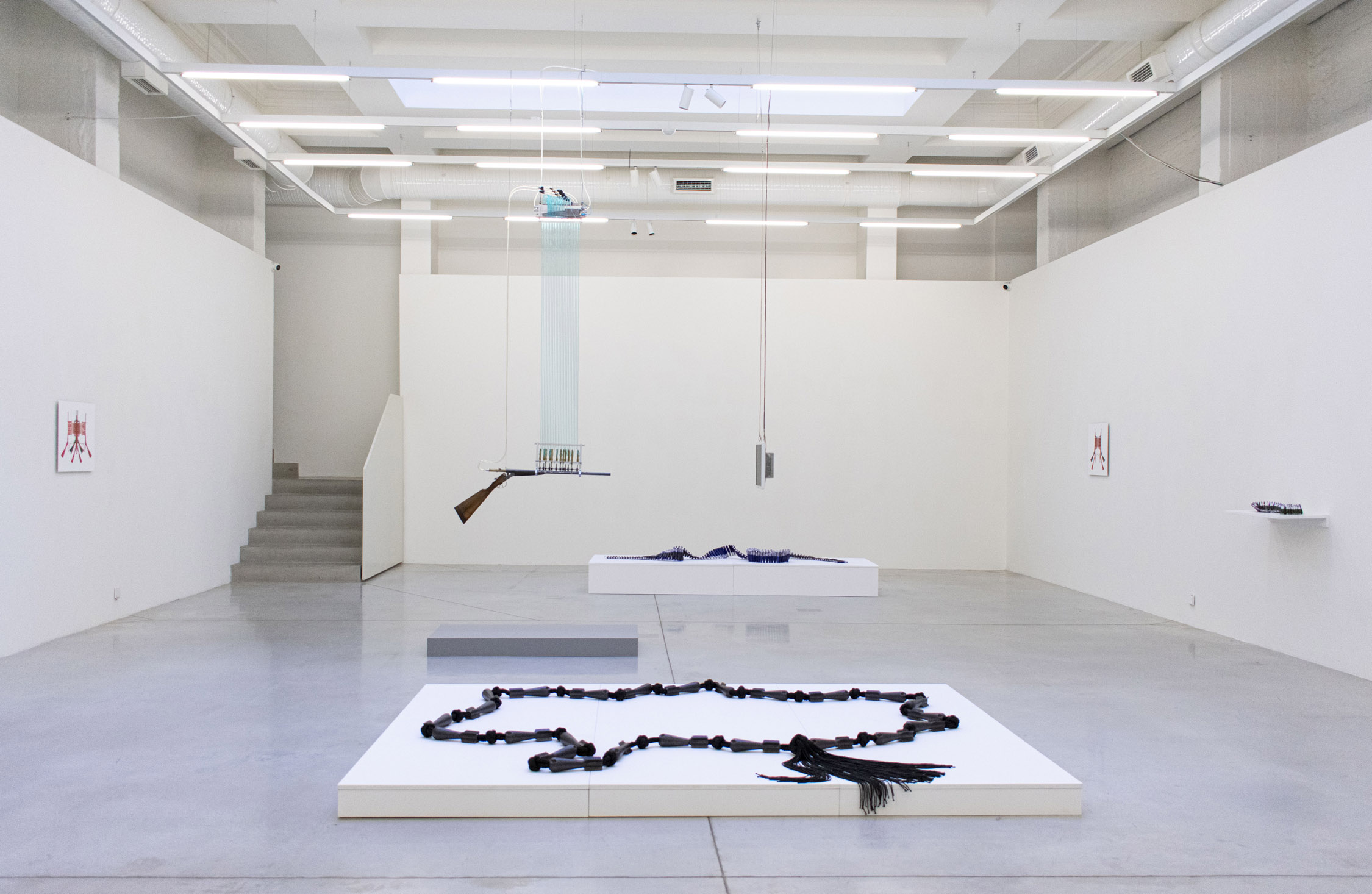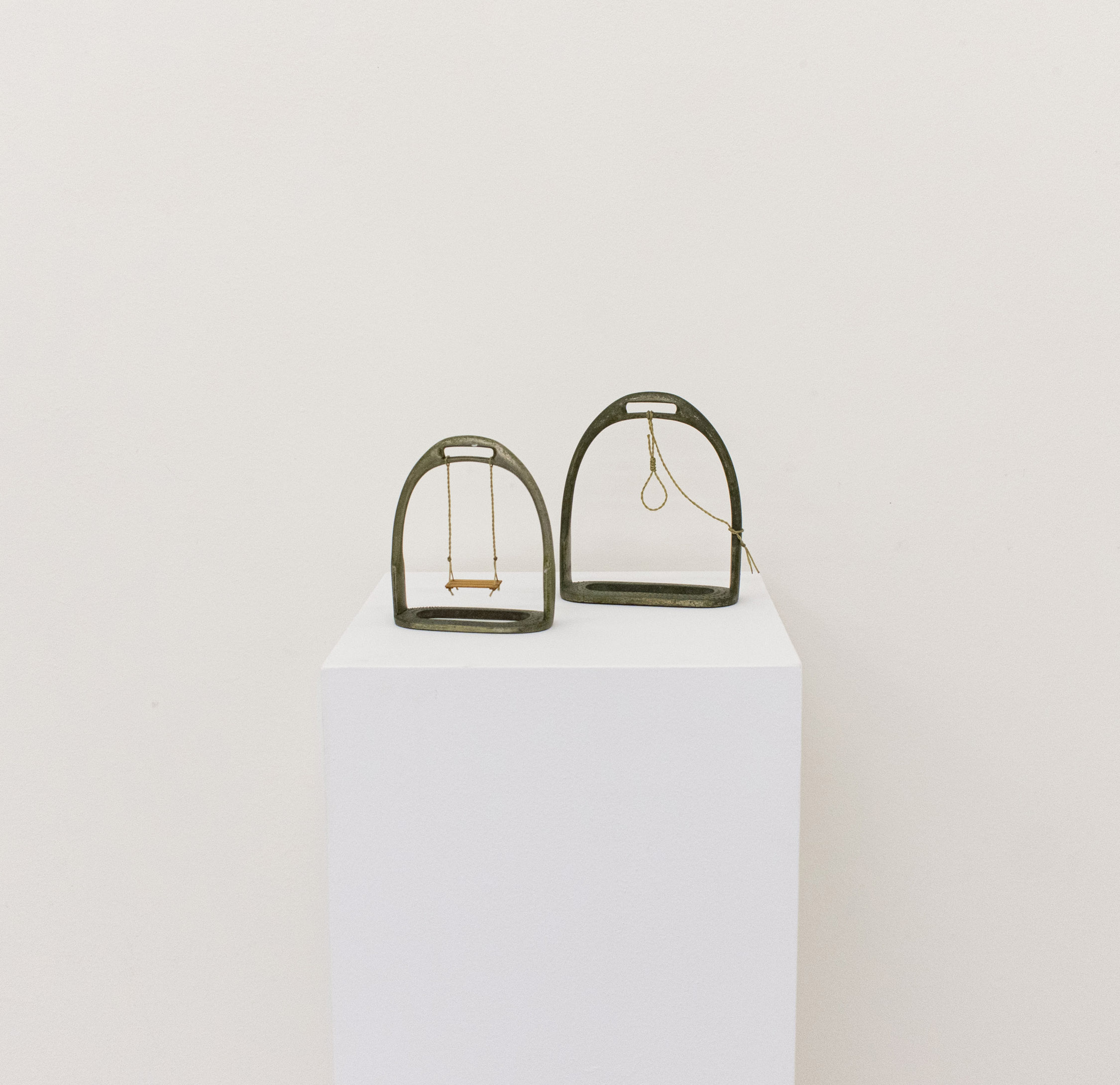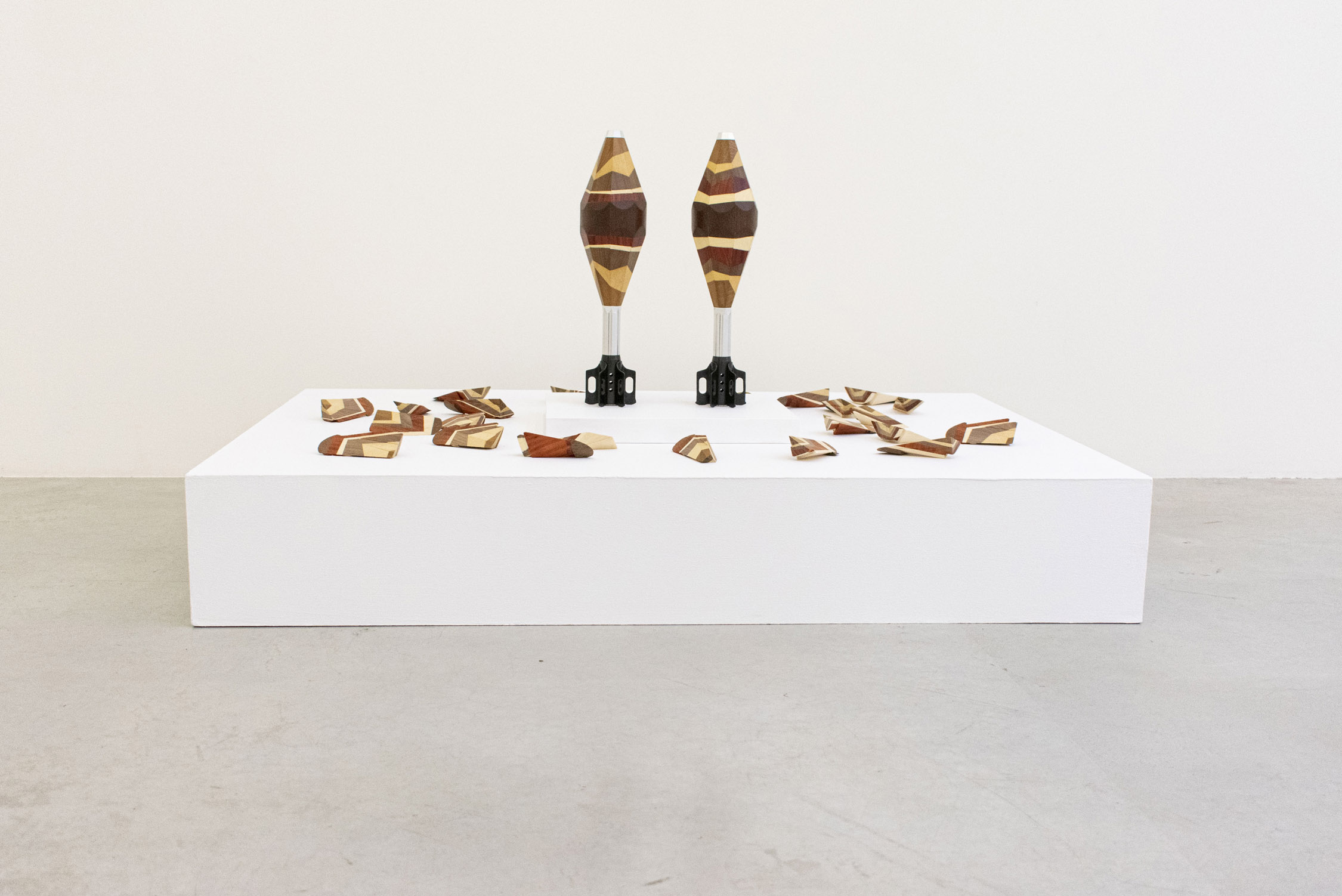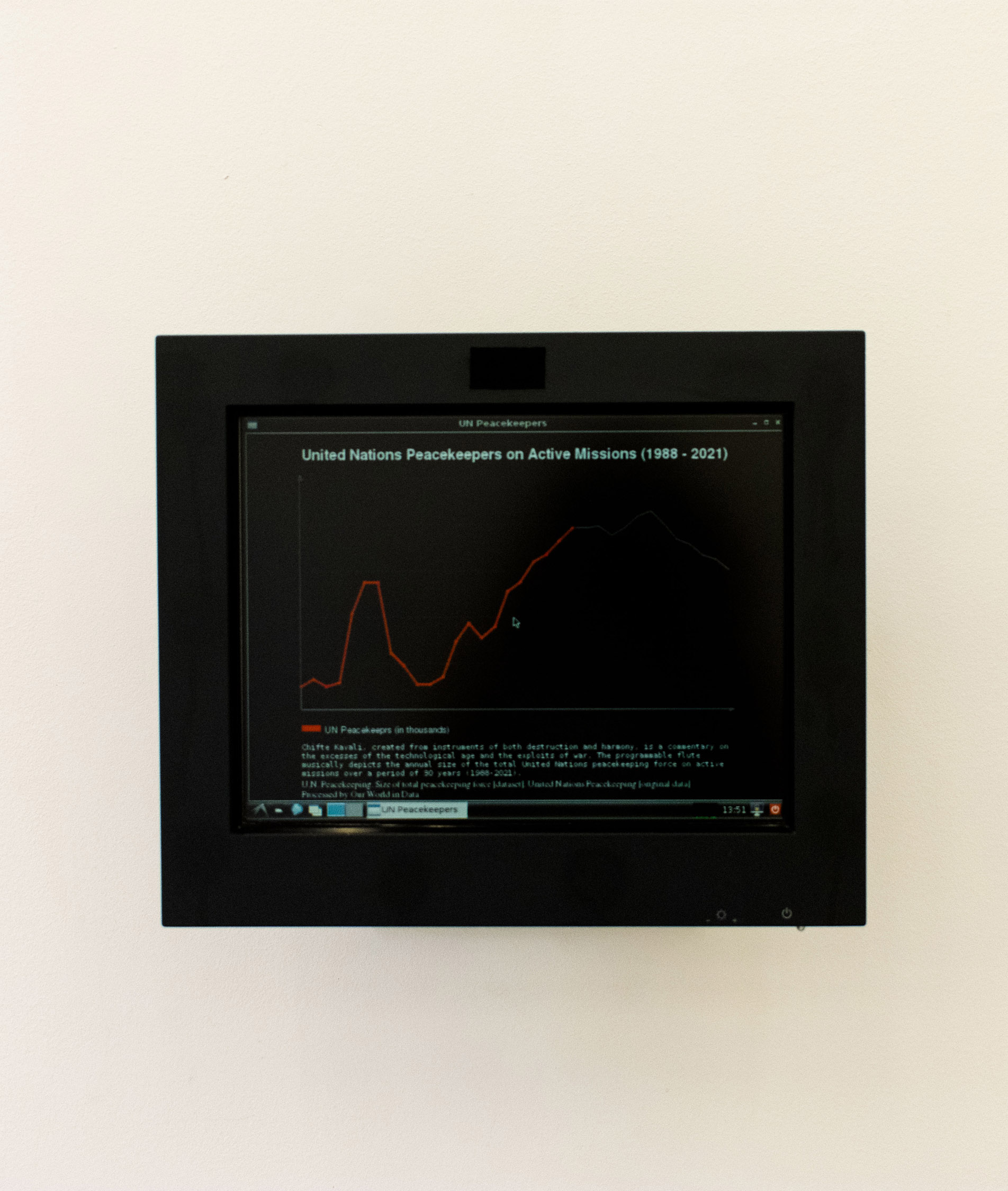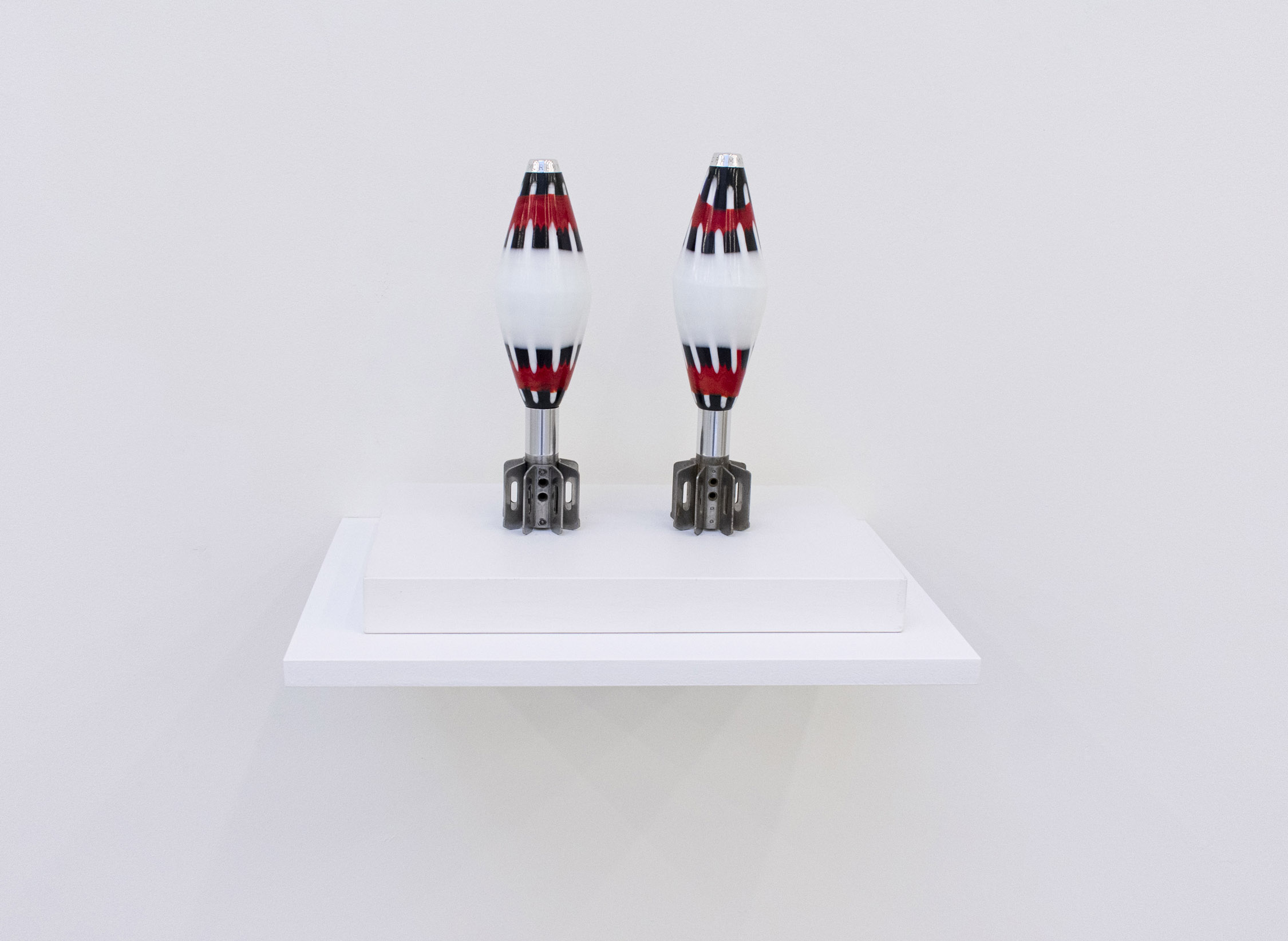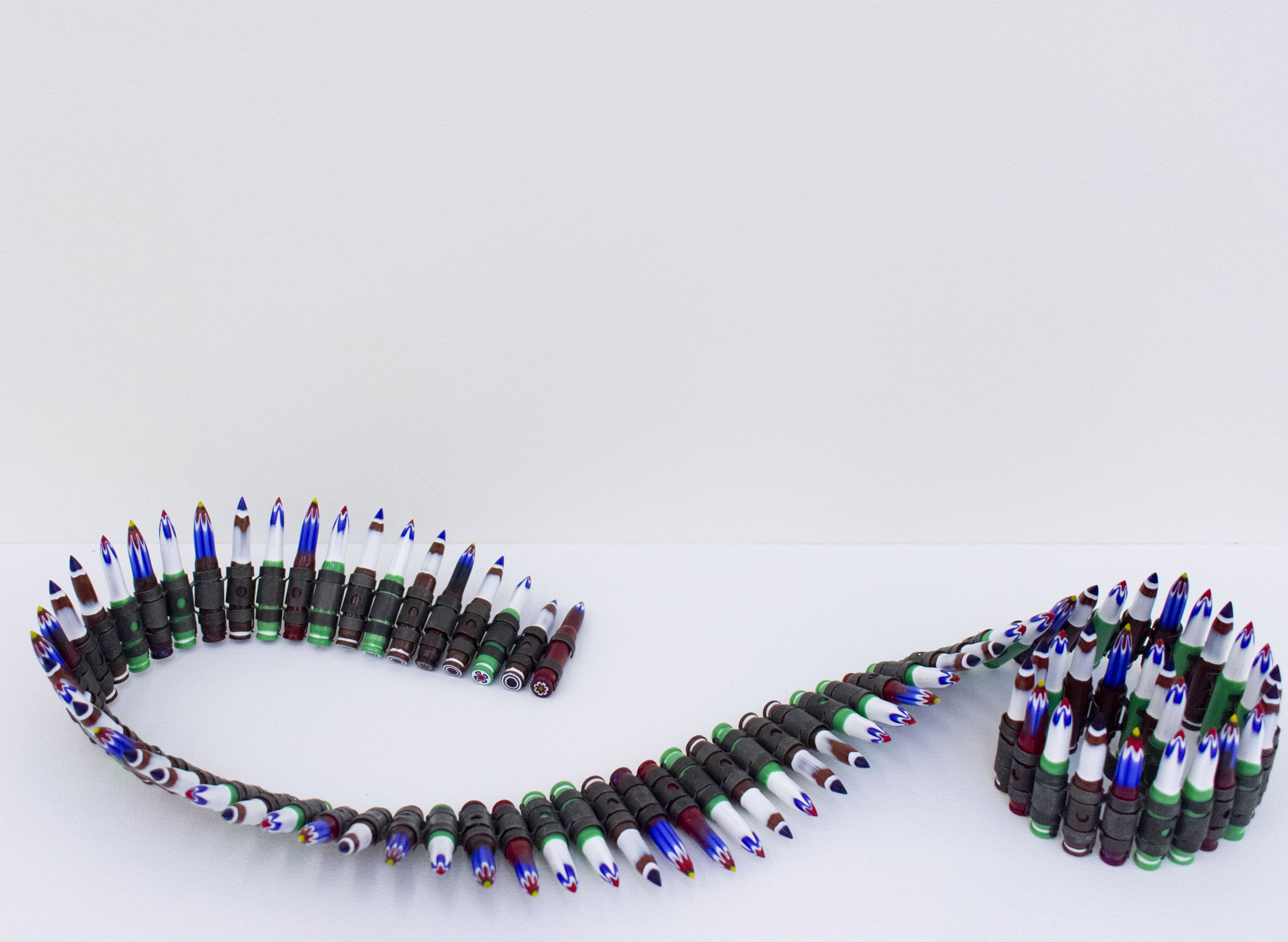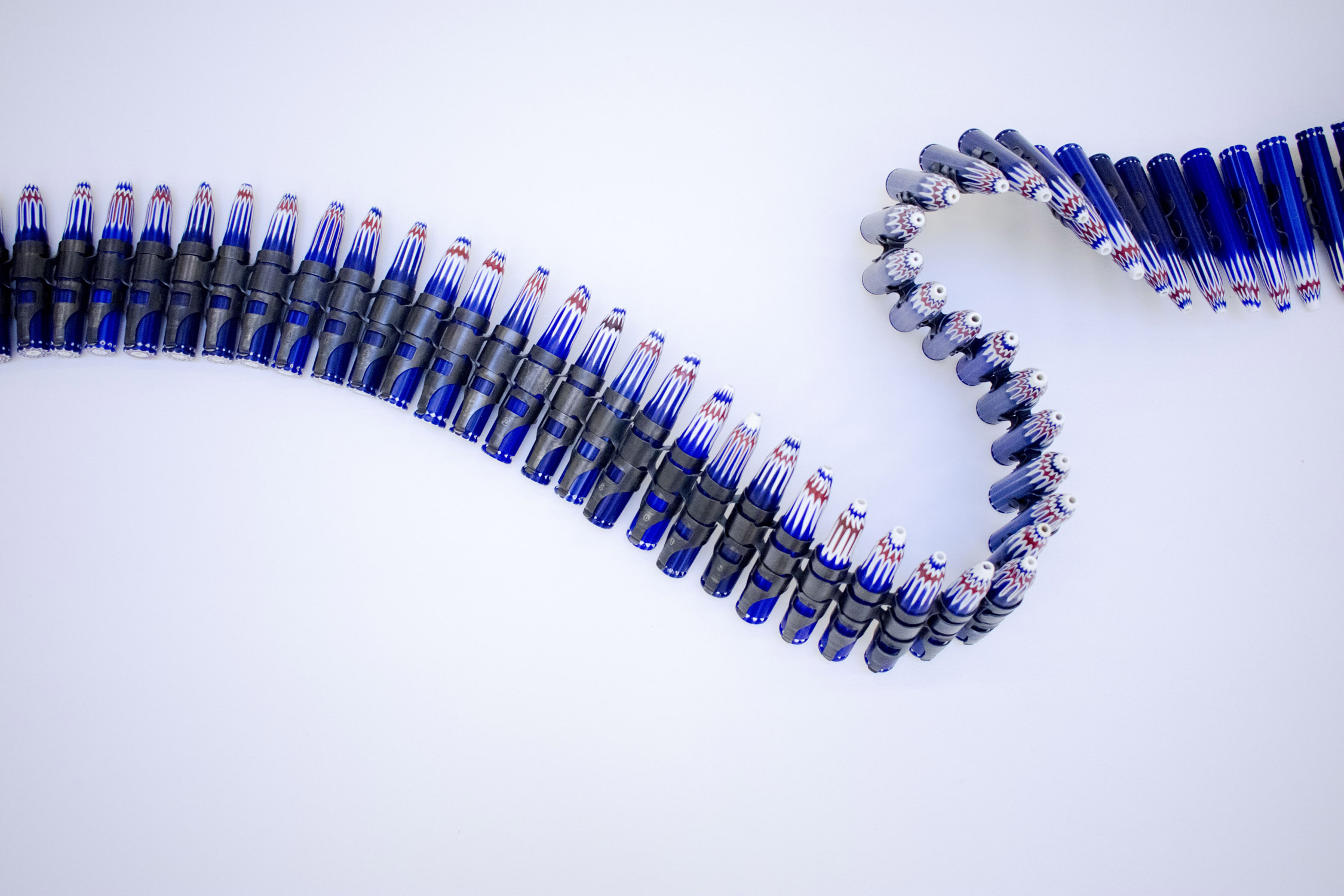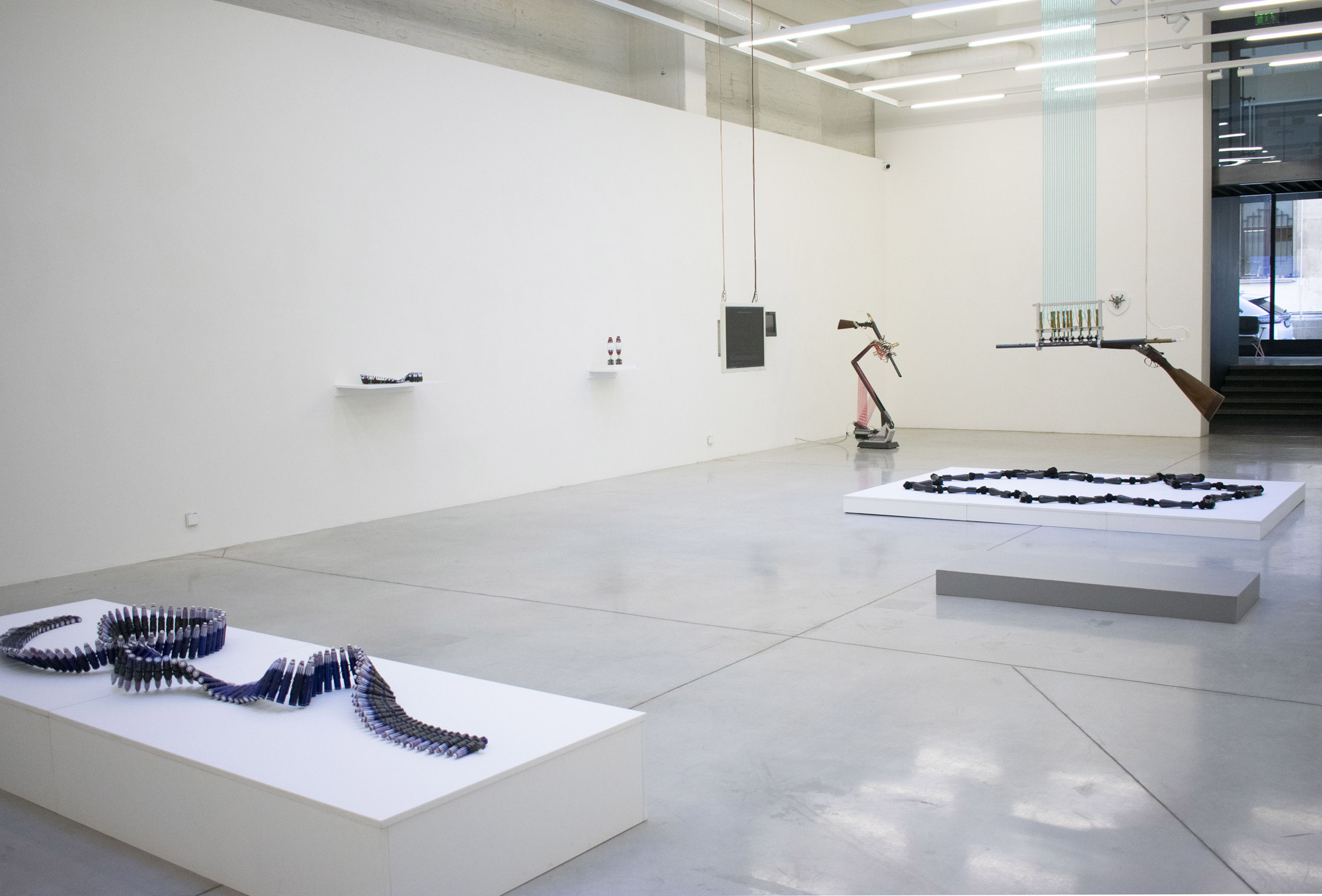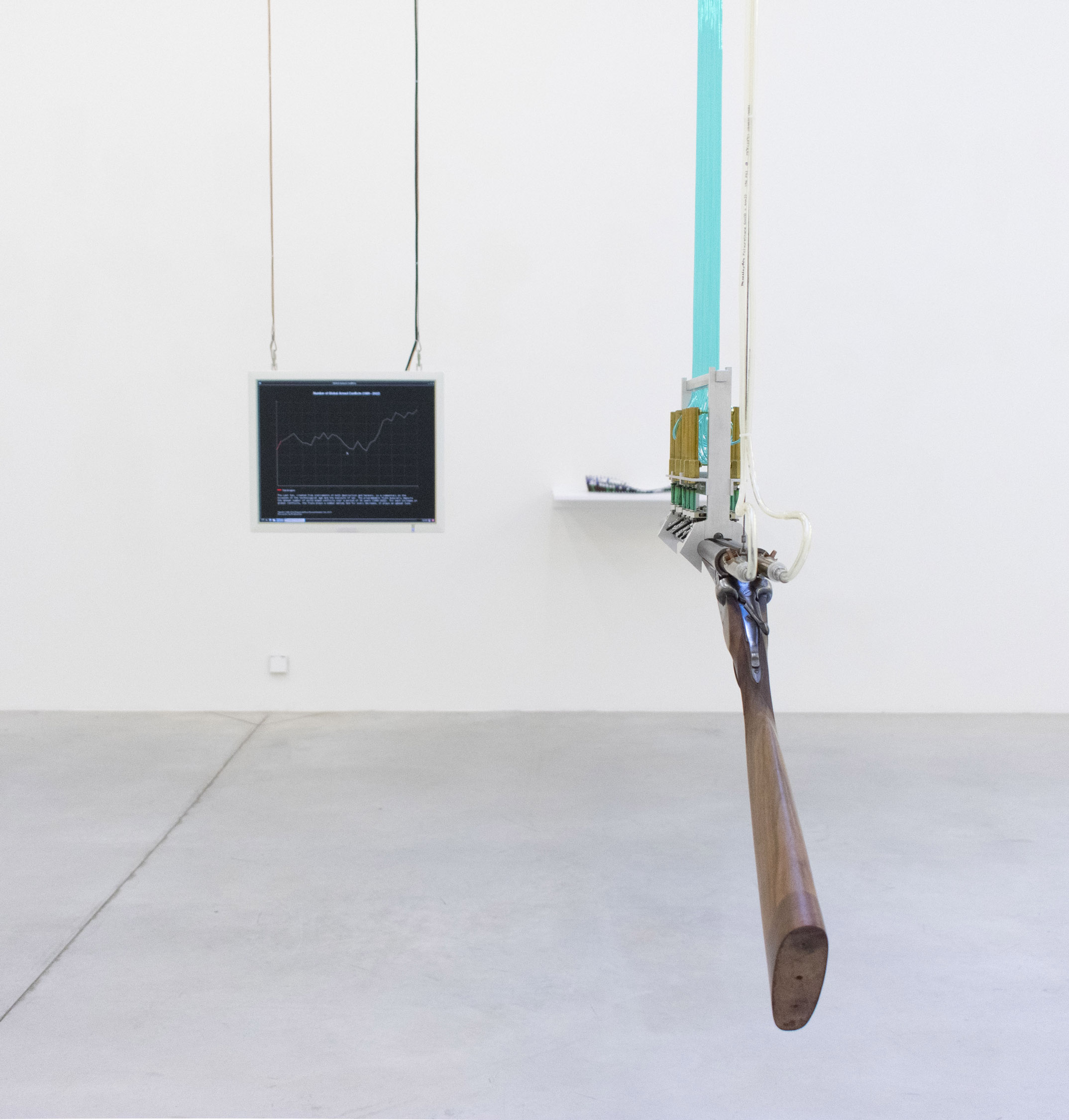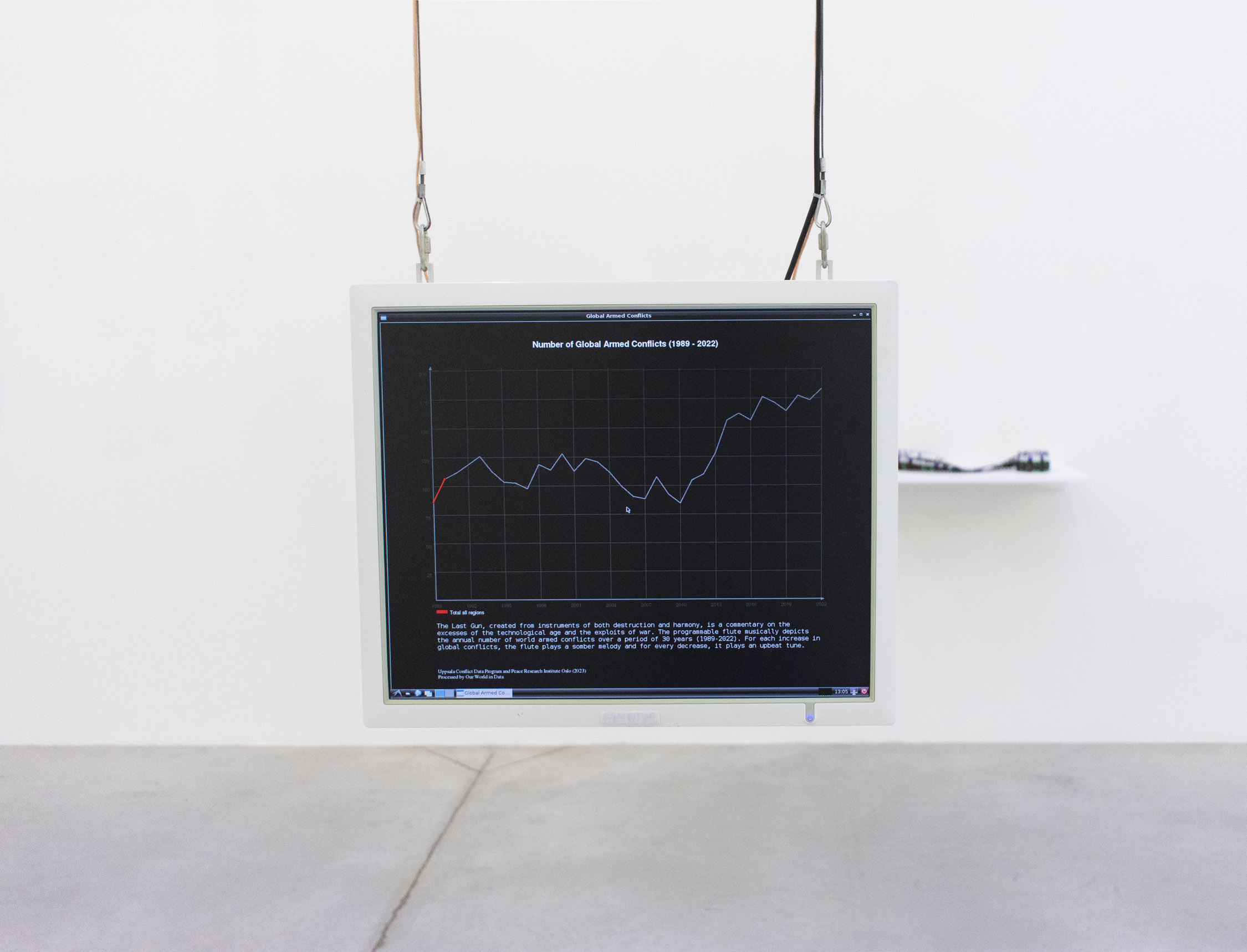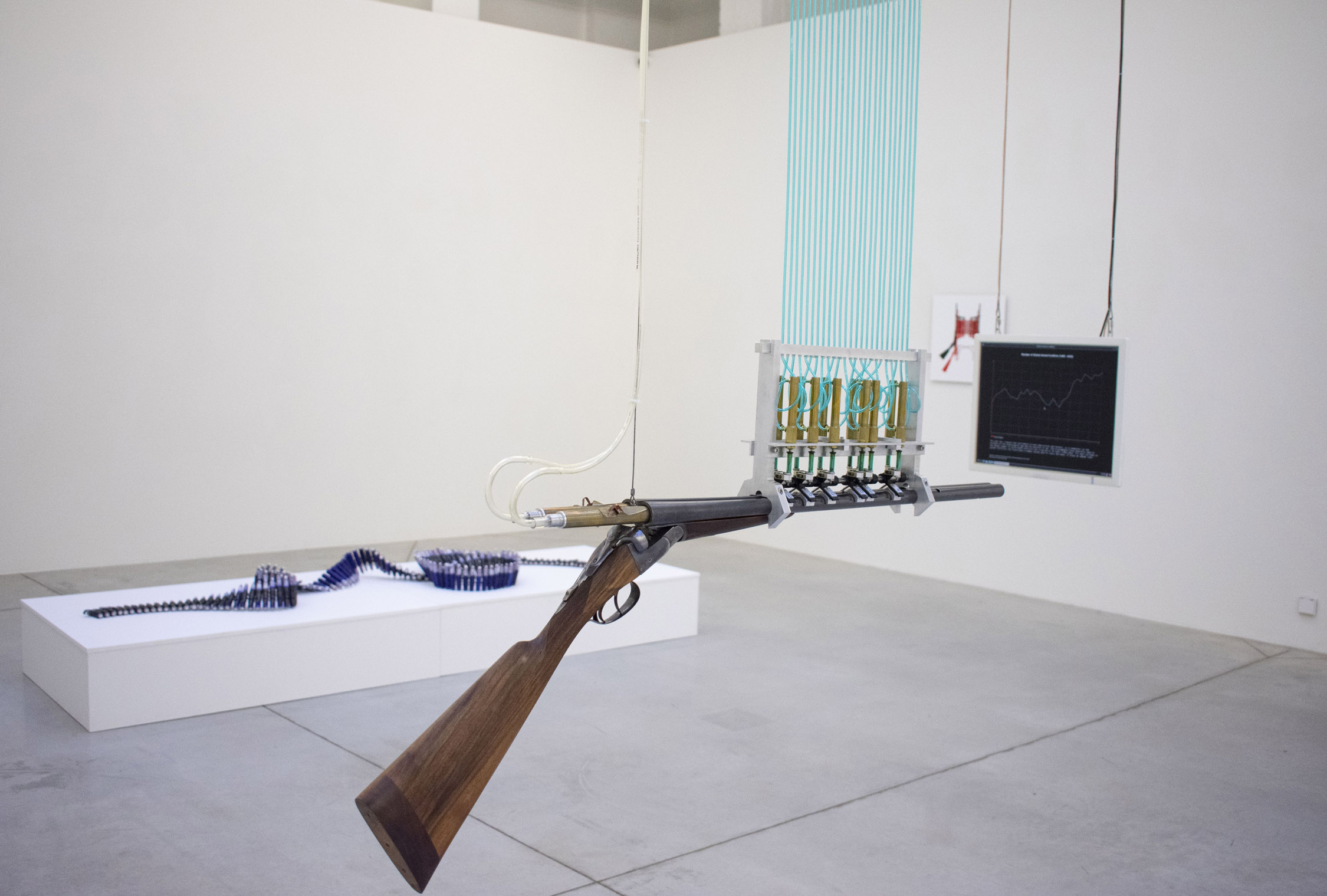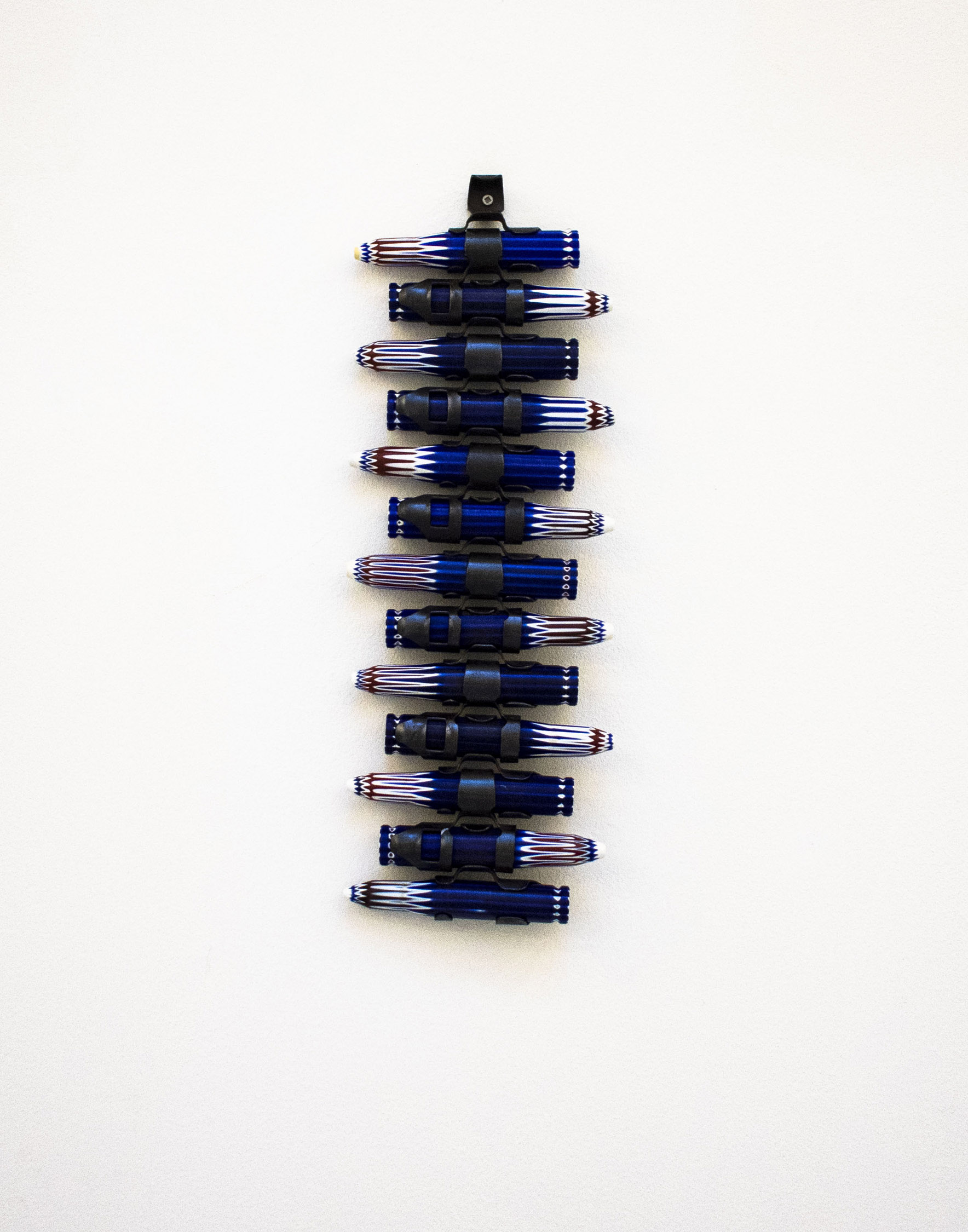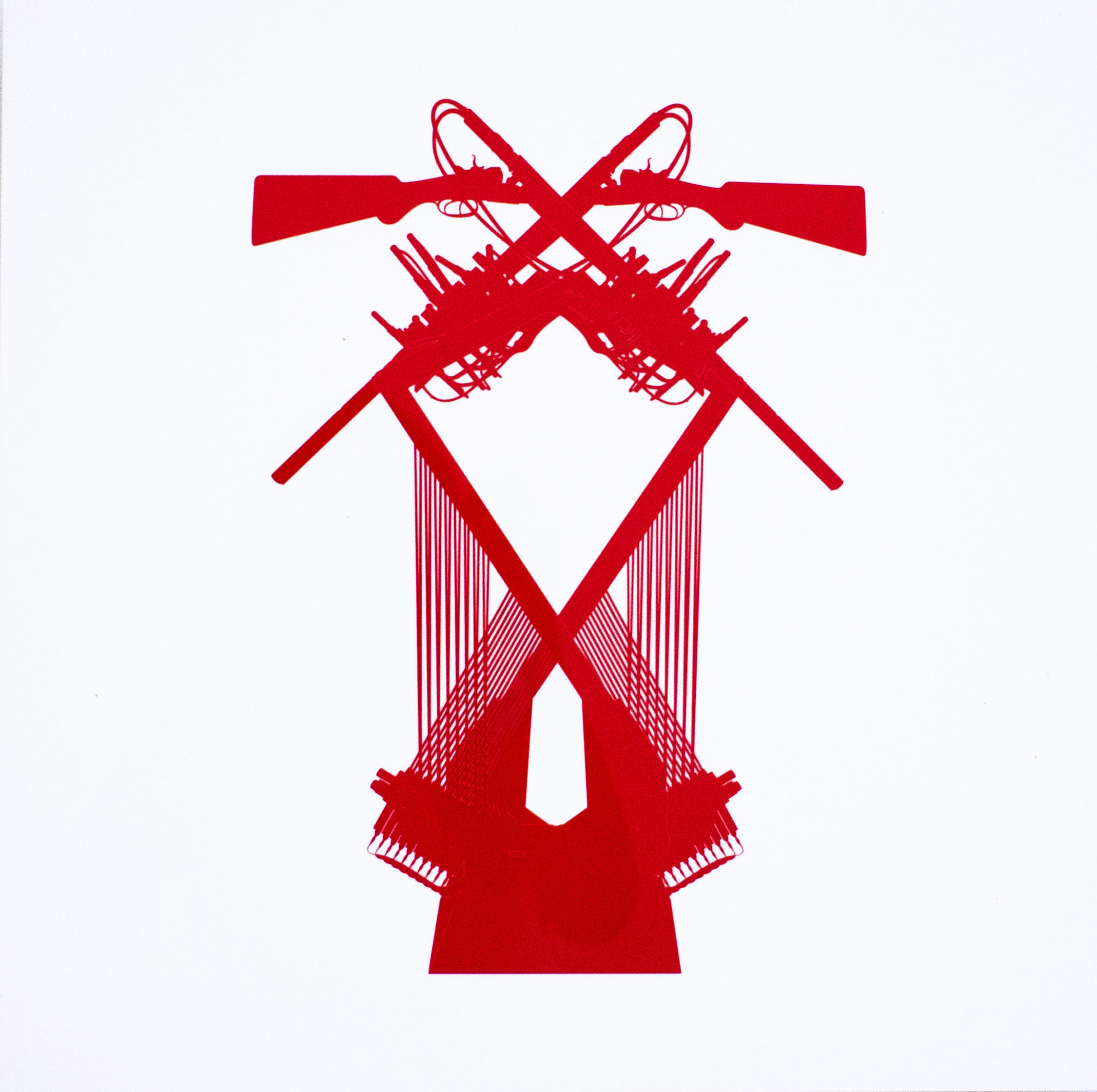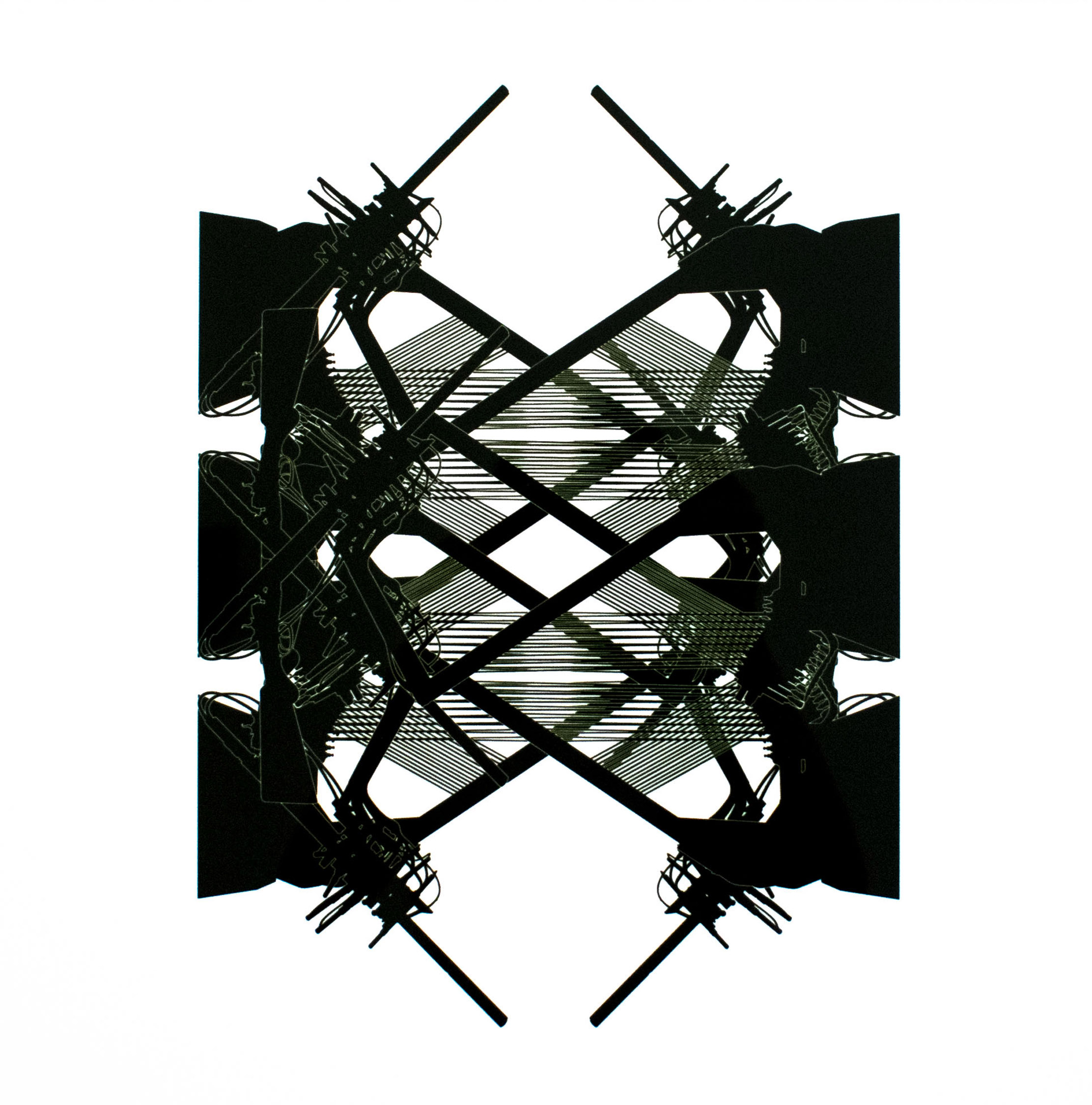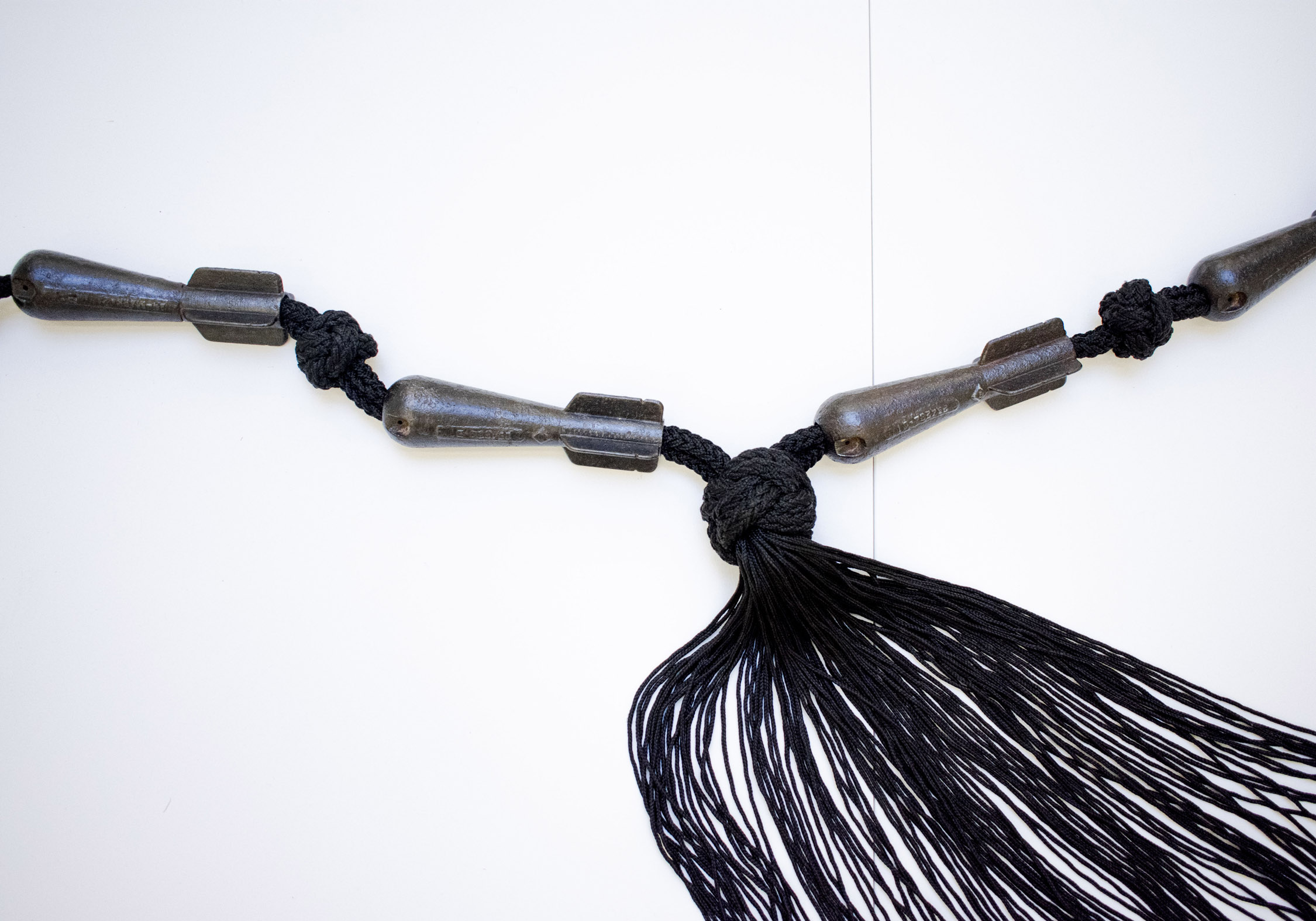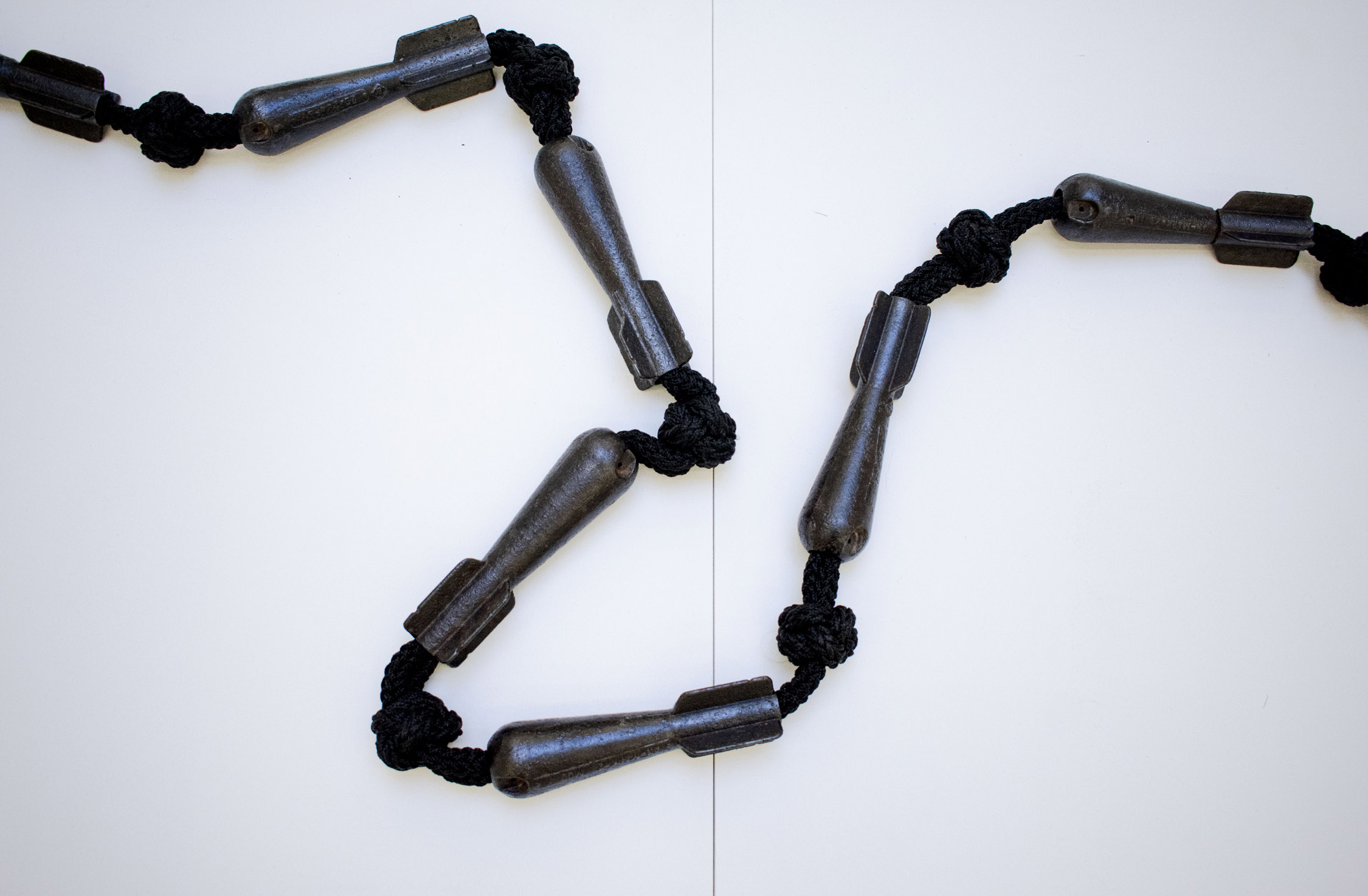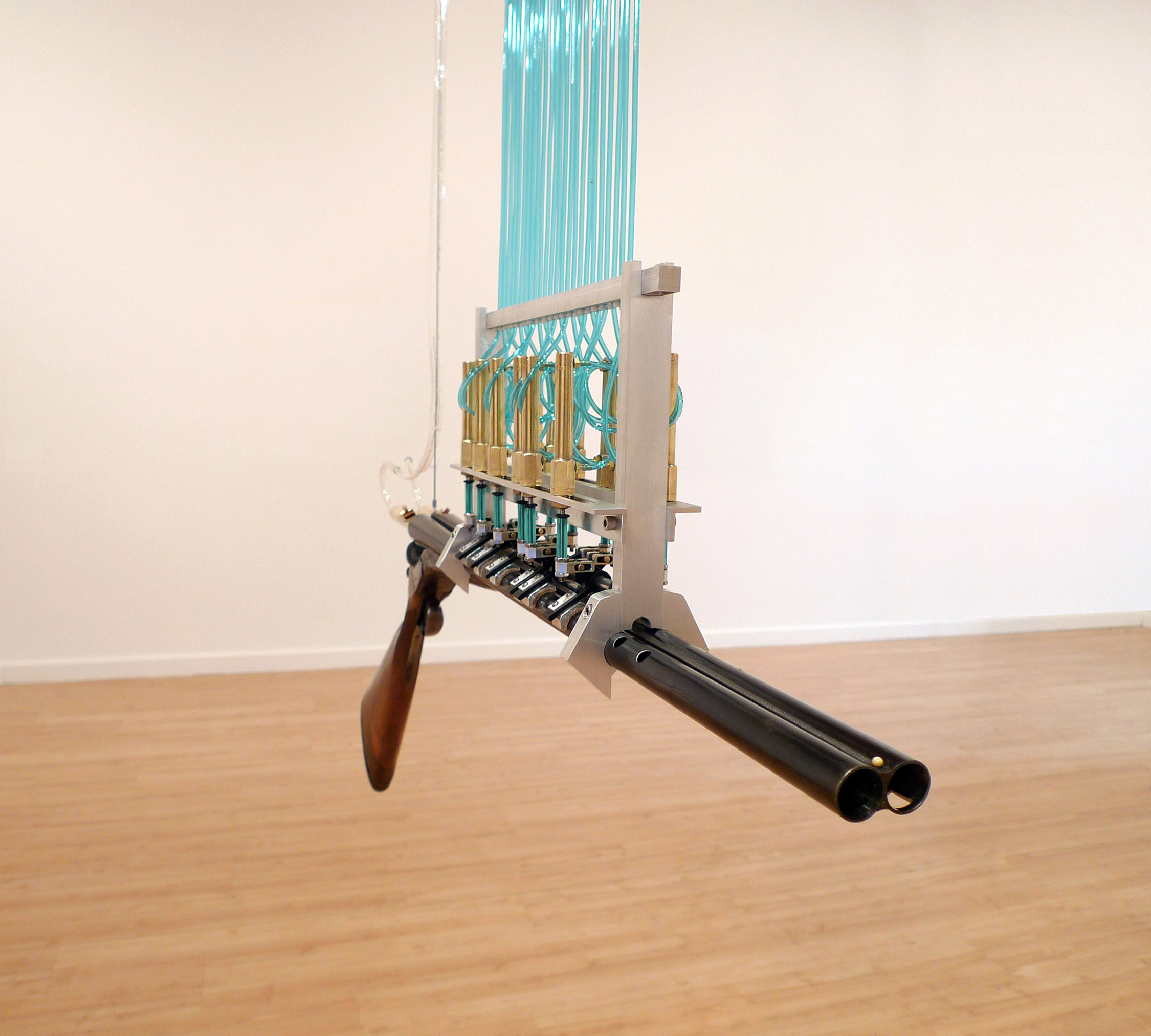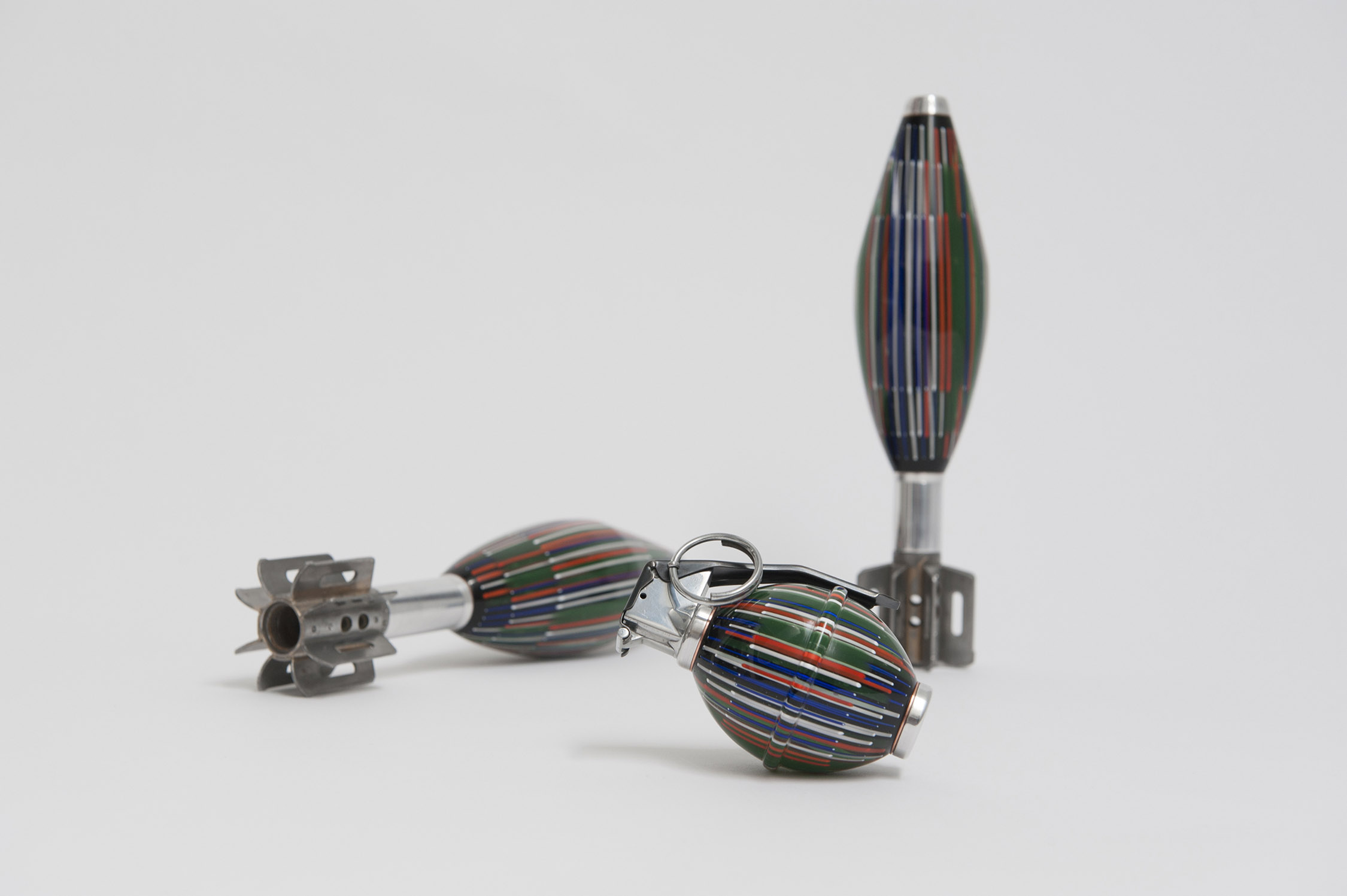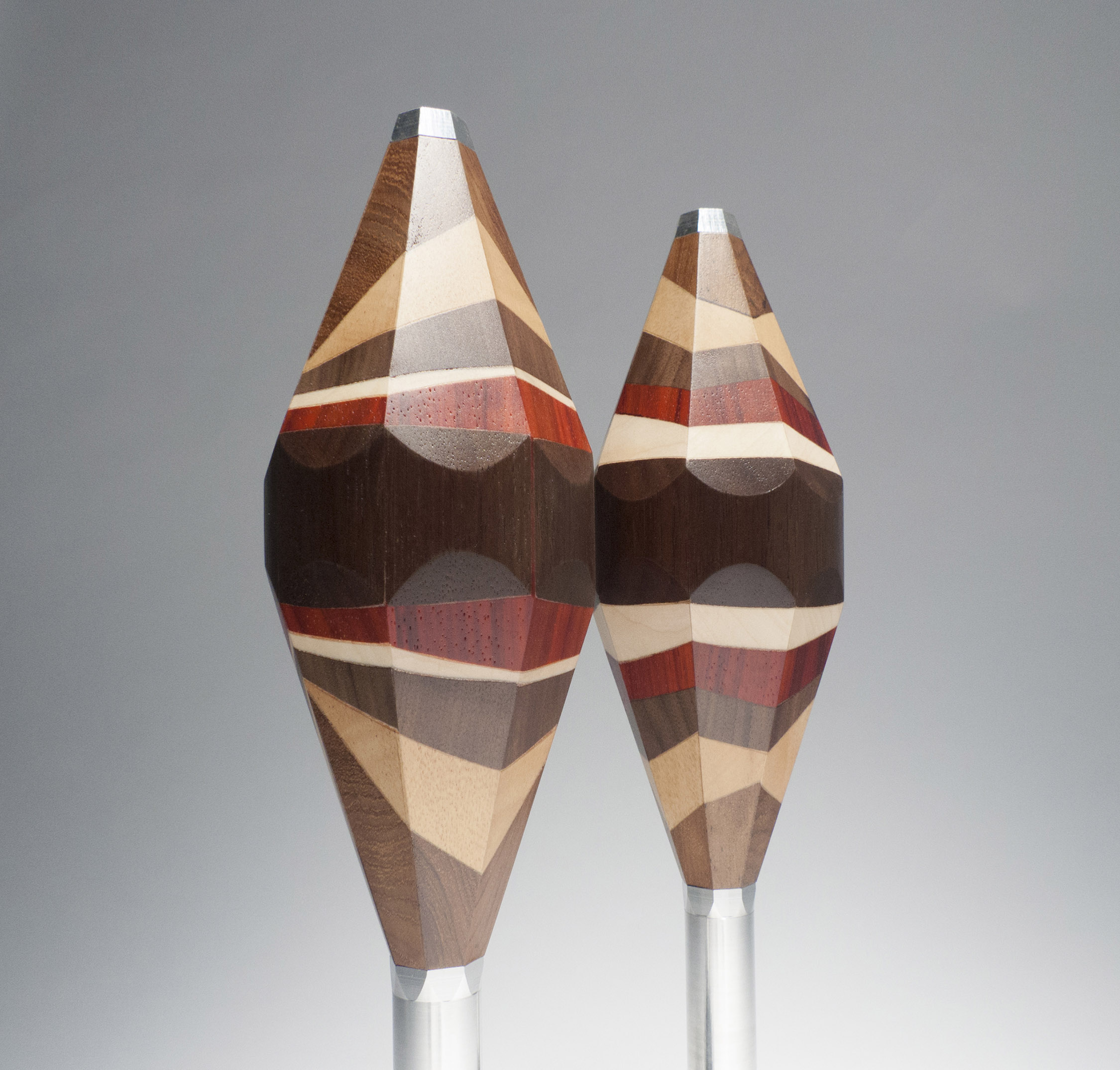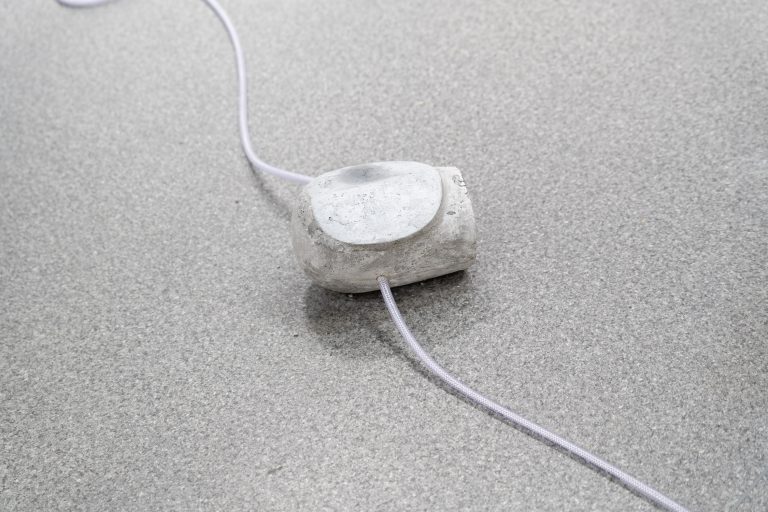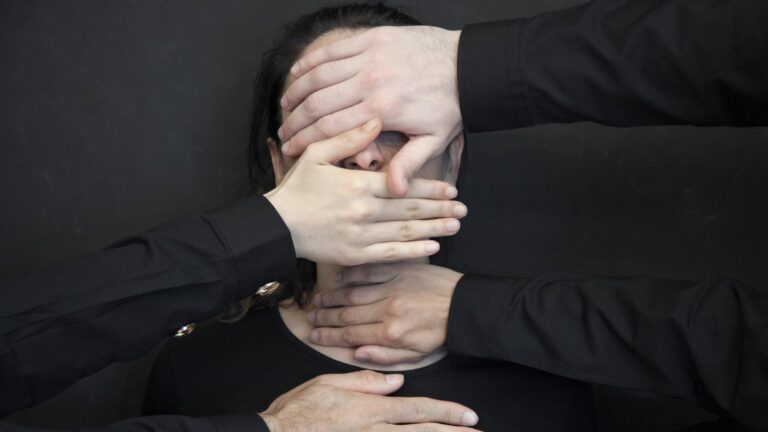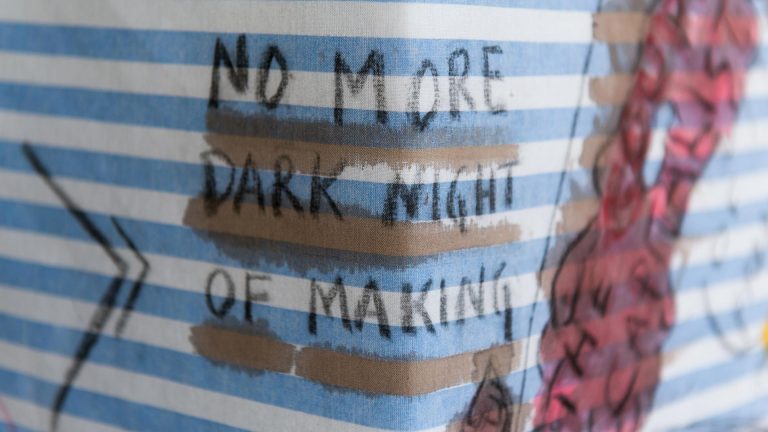The exhibition’s title is a pun on the English expression “piece by piece.” It refers to the idea that every small meaningful action could move humanity away from a global military catastrophe. It is also inspired by the “Trade Beads” series of works dealing with the historical past and the seemingly inevitable repetition of events. The rosary of cast iron bomb-like shapes “Prayer Beads,” 2016, best illustrates the exhibition’s message and becomes a sign of shattered faith, lost illusions and, futile prayers.
Constantine Zlatev’s work is a reaction to the use of violence as an expression of political domination, territorial redistribution, economic factors or religious conflicts, exploring its various manifestations through the ages. The presented collection was created in the period after 2010 and bore the general title “Ahimsa (Do No Harm)”. According to the artist, the basic concept stems from the observation that humanity puts its best technological resources and scientific efforts into inventing weapons and methods of aggression that inevitably lead to self-destruction. Created from parts resembling a military arsenal, the works comment on the problem of armed violence in society and the tangled complexity of the global arms industry and trade.
“The Last Gun”, 2012, is a mechano-robotic flute created from a deactivated shotgun and industrial components. The barrels of the rifle have been converted into a double flute that is played with compressed air. The installation graphically and then musically represents the rise and fall of world military conflicts from 1989 to 2022. The flute is programmed to play a somber tune for each increase in armed conflict and an upbeat tune for each year in which conflicts decrease. The work was executed with the assistance of Kostadin Ilov and Velina Ruseva.
The concept of the “Trade Beads” series is based on the historical significance of beads and their use as a powerful tool during the slave trade and colonization of the New World. The sculptures draw a parallel to the arms trade today as a modern tool to influence political and economic doctrines.
Made in Europe, decorative glass beads were used between the 16th and 20th centuries to ensure the safe passage of explorers and traders, mainly through Africa and the Americas. They were exchanged for people, ivory, gold and other goods coveted in Europe. Some of the most expensive are Millefiori beads – unique, beautiful and sought after around the world. The “aristocrat” of trade beads is the Venetian Rosetta, invented in 1480 by Marietta Barovier. It is obtained from a hollow glass rod that has a star pattern with twelve rays and is usually white, blue and tile red. This bead was sent to the French West African colonies, to India and America and has since spread all over the world. Rosettes have been coveted for many centuries because of their variety and intensity of colors, none of which could be found in the materials available to the native populations of the colonized nations.
In “Trade Beads”, Constantine Zlatev explores the precursors and early examples of the arms trade. He shapes antique beads of Venetian Murano glass to resemble bombs and grenades, or places them in ammunition chains, creating sculptures reminiscent of the shapes of modern weapons. The works raise questions about the extent to which aspects of the arms trade sustain neocolonial structures in the current era.
The exhibition is the artist’s first solo presentation since his return to Bulgaria in 2022. It includes kinetic installations, sculptures, objects, prints and video documentation.
* * *
Constantine Zlatev (b. 1974, Ruse, Bulgaria) is an artist and designer who works in a variety of media, including glass, metal, stone & wood. Most of his conceptual sculptures and installations are grounded in ideas of social, cultural or historical significance.
At the age of 23, his love for the mountains and lifelong passion for rock climbing made him relocate to California where he shared in the climbers’ culture and lifestyle of Yosemite Valley. He studied industrial design & interdisciplinary art at the California College of the Arts (2005-2010). He freelanced as a designer in the San Francisco Bay Area, where he worked on projects for the tech world and mechanical design for space satellites. Ultimately Constantine’s passion for art and history, and a strong belief in the importance of pursuing creative freedom and fulfillment, led him to focus entirely on his art career. In 2022, he moved to Bulgaria & currently lives and works in Gabrovo.
Constantine’s design background is evident in his sculptures and kinetic art installations, which often incorporate the extensive use of industrial manufacturing technologies and materials. The combination of reliable technical performance with meticulous aesthetic refinement aims to create works that are as functionally and visually flawless as possible. His work has been exhibited internationally and he frequently participates in solo & group exhibitions in Europe & the U.S.
Solo exhibitions: Trade Beads, TechShop Gallery, San Francisco (2016), Crossroads, 1Opera Gallery, Naples (2014), Fork Ahead, de Jong Warehouse, San Francisco (2011). Group exhibitions: The Better Part of Us, Structura Gallery, Sofia (2024), Up In Arms, Kunstraum Kreuzberg/Bethanien, Berlin (2019), Art of Peace, Yerba Buena Center for the Arts, San Francisco, California (2019), Politic(s), 14th Festival Art Stays, Ptuj, Slovenia (2016), Bal Robotov Exhibition & Forum, Moscow (2015), Segrete, Castel dell’Ovo, Naples, Italy (2014), The Game, Amy-d Arte Spazio, Milan, Italy (2013), 7th International Arte Laguna Prize, Venice Arsenale, Venice, Italy (2013), Politicizing Aesthetics, John A. Day Gallery, South Dakota (2012), Fall National Juried Exhibition, Marin MOCA, California (2012), CCA Interface Show, Oliver Art Center, Oakland, California (2010). Grants and Awards: Creative grants from the National Cultural Fund of Bulgaria (2022, 2021, 2020), Fall Art Residency at TechShop-San Francisco (2016), Abate Zanetti Glass School residency in Murano, Italy (2015), Sculpture & Installation Winner at the 7th Arte Laguna Art Prize, Venice, Italy (2013).




